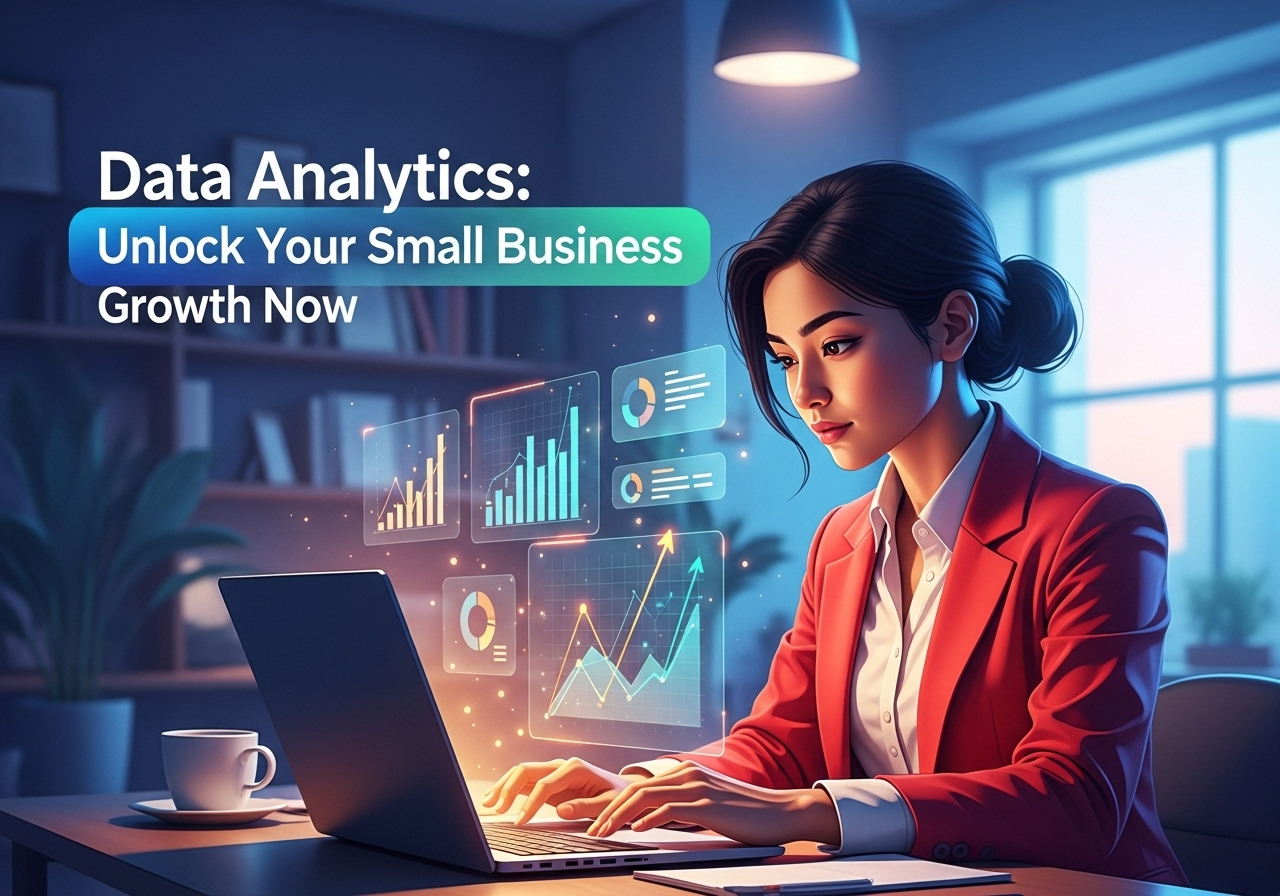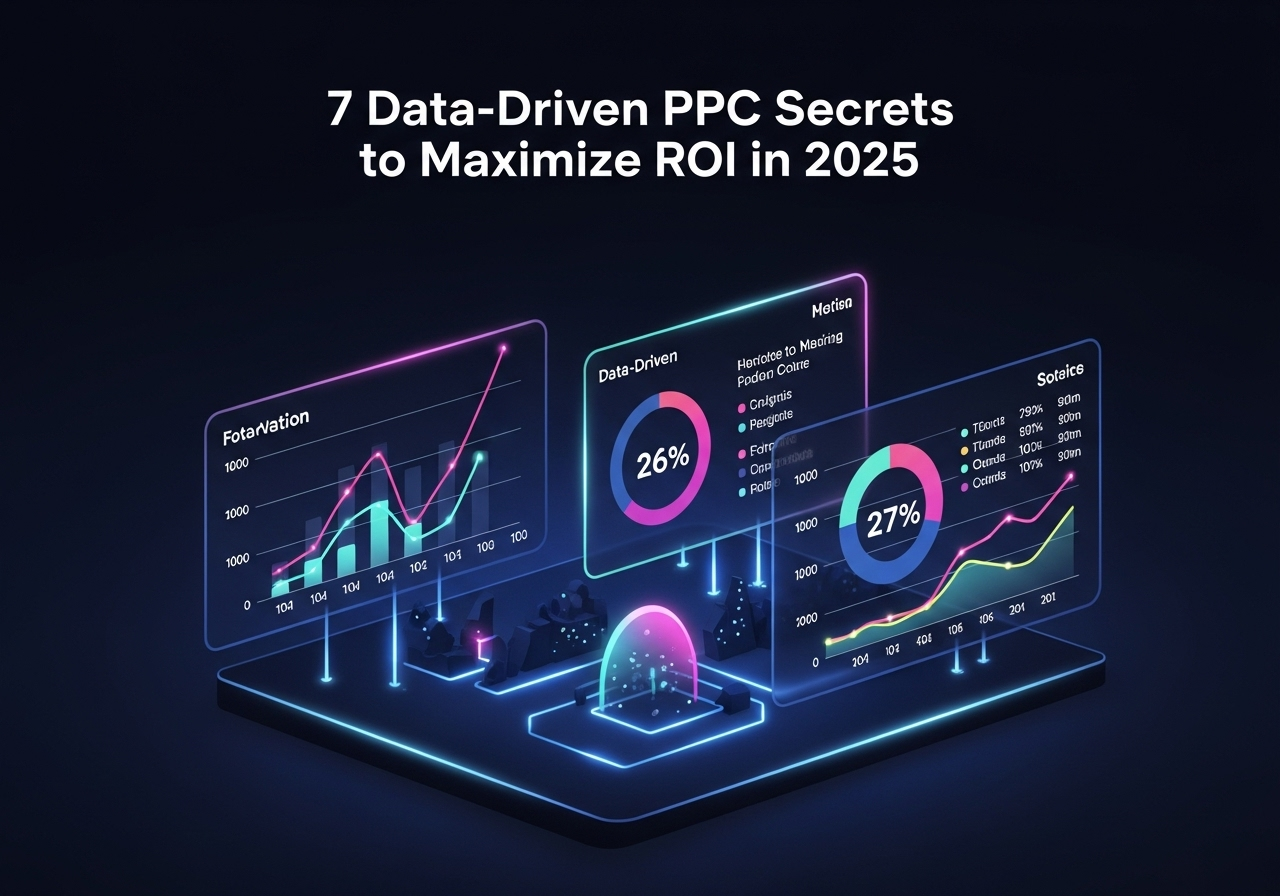In today’s data-driven business landscape, small businesses are no longer at a disadvantage when it comes to analytics. As of 2025, the global big data market is projected to reach $103 billion, more than double its size in 2018—clearly reflecting the increasing reliance on analytics to drive decision-making across organizations of all sizes. For small business owners, this data revolution isn’t just for enterprise companies anymore—it’s becoming essential for survival and growth in an increasingly competitive marketplace.
The Small Business Data Analytics Revolution
The days of making business decisions based solely on intuition are rapidly fading. Today’s small business owners have access to sophisticated data analytics tools and services that were once exclusively available to large corporations with dedicated IT departments. Consequently, this democratization of data analytics is creating unprecedented opportunities for growth, efficiency, and competitive advantage.
Why Small Businesses Need Data Analytics Now
A decade of investment in artificial intelligence and machine learning has boosted business growth on multiple fronts, from the ability to turn text into images to tools that predict when deals will close and at what value. Small and medium-sized businesses (SMBs) now have access to these sophisticated operational, forecasting, and planning tools that were previously exclusive to large enterprises with coding teams.
As Kunal Madan, founder of online retailer Amarra, explains: “Analyzing customer behavior data can highlight peak purchasing times, allowing businesses to optimize their operational schedules, thus reducing costs. Detailed product performance data can inform targeted inventory management, preventing stockpiling and wastage.”
Top Data Analytics Trends Reshaping Small Business in 2025
The landscape of small business data analytics is evolving rapidly. Therefore, here are the most significant trends that are transforming how small businesses operate in 2025:
1. AI-Powered Analytics Tools Become Mainstream
Artificial intelligence technology has dramatically improved business analysis capabilities for small businesses. Nearly 65% of organizations have adopted or are actively investigating AI technologies for data and analytics as of 2025. These AI-powered forecasting systems have become increasingly sophisticated, allowing even small organizations to anticipate market trends and user behavior with remarkable accuracy.
Moreover, the marketplace for AI plug-ins is growing quickly, with AI-powered data analytics tools available either as core or add-on services for numerous business applications. This trend is particularly beneficial for small businesses that lack dedicated data science teams but still need powerful analytical capabilities.
2. Self-Service Business Intelligence Platforms
Remember when you needed a technical translator just to get basic data insights? Those days are officially over in 2025. Self-service business intelligence has transformed from luxury to necessity. For example, your marketing manager can now create custom sales territory reports without filing an IT ticket, and your operations lead can build supply chain visualizations during her morning coffee.
According to Accenture’s research, only about 32% of business executives say they’re able to create measurable value from data, and just 27% report that their analytics projects produce actionable insights. This gap highlights the importance of self-service BI tools that are designed for humans, not data scientists. Popular platforms like Power BI and Tableau continue to lead the market with user-friendly interfaces that make data analytics accessible to non-technical staff.
3. Edge Computing and Real-Time Analytics
Edge computing brings data processing nearer to the source—be it IoT sensors, mobile endpoints, or industrial sensors. In 2025, this decentralized model reduces latency, saves bandwidth, and facilitates quicker decision-making. For small businesses, this means the ability to process data closer to its source, minimizing latency and bandwidth usage.
Real-time edge analytics allows organizations to respond immediately to data gathered from vehicles, smart factories, or retail spaces. For applications such as predictive maintenance, autonomous systems, or real-time personalization, edge analytics is not only quicker but also safer since sensitive information does not have to travel to central servers.
4. Data Fabric Architecture for Integrated Insights
Data fabrics use machine learning and knowledge graphs to connect data in an intelligent way irrespective of format or location. This in turn speeds up decision-making, minimizes IT overhead, and improves data quality, enabling technical and non-technical users to extract value from data more effectively.
For small businesses juggling multiple software platforms and data sources, data fabric architecture provides a cohesive view of business operations without requiring massive IT investments or specialized expertise.
5. Augmented Analytics for Non-Technical Users
Augmented analytics leverages machine learning, natural language processing (NLP), and automation to improve the way users engage with data. It streamlines data preparation, insight creation, and even narrative, making analytics more accessible to non-technical users. In 2025, companies are embedding augmented analytics into day-to-day operations to make faster decisions and lessen dependence on data experts.
For instance, a small business marketing director can inquire of a platform in natural language why sales fell last quarter—and get instant AI-driven answers. This democratization of data is bridging the distance between data complexity and business acumen, making sophisticated analytics accessible to small business owners without technical backgrounds.
Essential Data Analytics Tools for Small Businesses in 2025
With the explosion of data analytics services tailored for small businesses, it can be challenging to determine which tools will provide the most value. Here are some of the most effective solutions available in 2025:
- Google Analytics: It remains one of the easiest ways for small businesses to start making sense of website data. It helps you see where your visitors are coming from, how they interact with your site, and how long they stick around.
- Statistical Analysis Software (SAS): SAS is a powerful analytics tool that helps small businesses collect, manage, and analyze data from different sources like websites, social media, and marketing platforms.
- Industry-Specific Analytics Solutions: Beyond general-purpose tools, 2025 has seen a proliferation of industry-specific analytics solutions, such as inventory optimization for retail or predictive maintenance for manufacturing.
How Small Businesses Are Leveraging Data Analytics in 2025
The practical applications of data analytics for small businesses extend far beyond basic reporting. Here’s how forward-thinking small business owners are putting data analytics to work in 2025:
- Customer Behavior Analysis: Gaining deeper insights into customer preferences to create targeted marketing and personalize experiences.
- Operational Efficiency: Identifying inefficiencies, optimizing resource allocation, and streamlining processes to reduce costs.
- Financial Forecasting and Risk Management: Developing more accurate financial forecasts and identifying potential risks.
- Competitive Intelligence: Gathering information about competitors and market trends to identify competitive advantages.
Overcoming Data Analytics Challenges for Small Businesses
Despite the benefits, small businesses face unique challenges when implementing data analytics:
- Limited Resources and Expertise: However, the growing availability of affordable, user-friendly tools is helping to address this challenge.
- Data Quality and Integration Issues: Data fabric architectures and modern integration tools are making this process more manageable.
- Privacy and Security Concerns: Implementing robust data governance practices and security measures is essential.
- Actionable Insights: This is where AI-powered and augmented analytics tools are making a significant difference in 2025.
Getting Started with Data Analytics for Your Small Business
If you’re a small business owner looking to leverage the power of data analytics, here are some practical steps to get started:
- Identify Your Business Objectives: Clearly define what you want to achieve with data analytics.
- Start Small: Begin with a specific, manageable project that addresses a key business challenge.
- Choose the Right Tools: Select analytics tools that align with your business needs, technical capabilities, and budget.
- Invest in Training: Ensure that your team has the skills and knowledge needed to effectively use the tools.
- Establish Data Governance Practices: Develop clear policies for collecting, storing, and using data securely.
The Future of Small Business Data Analytics
Looking ahead, the future of small business data analytics is incredibly promising. As technology continues to advance and become more accessible, small businesses will have even more opportunities to leverage data for competitive advantage. Emerging technologies like agentic AI, quantum computing, and immersive analytics tools (AR/VR) are already beginning to transform how small businesses interact with and derive value from their data.
Conclusion: Data-Driven Success for Small Businesses
In 2025, data analytics is no longer a luxury for small businesses—it’s a necessity for survival and growth. By leveraging the power of data analytics, small businesses can make more informed decisions, optimize operations, and ultimately achieve greater success. The democratization of data analytics tools has leveled the playing field. As we move forward, the small businesses that thrive will be those that embrace data analytics as a core component of their strategy. The time to start that journey is now.
Ready to transform your small business with the power of data analytics? Find Out EXACTLY What’s Missing in Your Marketing Strategy!



